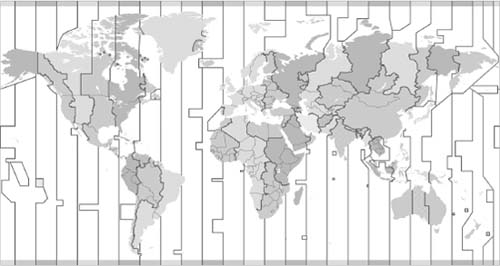Everyday MathMath and Traveling |
What are time zones? |
Time zones are any of the 24 regions on the globe (loosely divided by longitude but more erratic in their demarcations), which is divided according to the number of hours in a day. Within each zone, all clocks are set to the same time. Time zones include the international date line, an imaginary line of longitude generally 180 degrees east or west of the prime meridian; the date becomes one day earlier to the east of this line.
Time zones are truly a product of mathematics. Initially, people used local solar time, resulting in slightly different times between towns. With technology—especially trains and telecommunications—more accurate timekeeping became a necessity. Thus, time zones helped solve many of the problems by setting the clocks of a region to the same mean solar time. The time zones made it easy for neighboring time zones to be labeled “one hour apart.” Not that the system is perfect. The hour separation is not universal, and because they often follow political boundaries, the shapes of the time zones can be extremely irregular.

The world is divided up into time zones, sometimes rather irregularly; and not all time zones are separated by a full hour— some only have a half hour difference from adjacent zones.
